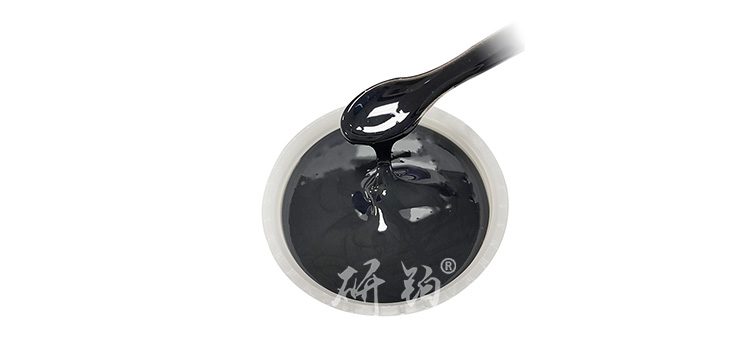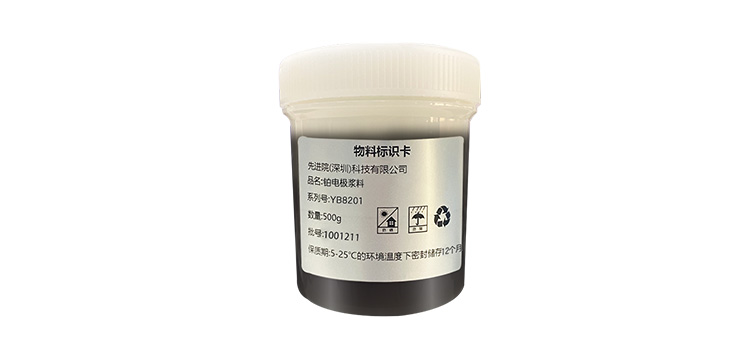Brief introduction
Printing and coating technology plays an important role in the manufacturing process of various electronic products, especially in the application fields of oxygen sensors, fuel cell catalysts, etc. Platinum electrode paste, as a key conductive layer material, directly affects the quality of the final product whether its viscosity is suitable for the specific printing or coating process.Research Platinum Brand YB8201It is a high-performance product developed by Advanced Institute (Shenzhen) Technology Co., LtdPlatinum electrode slurryIts viscosity is one of the important factors determining its applicability.
2、 Viscosity and Printing/Coating Process
- The Importance of Viscosity
- Viscosity is a physical quantity that measures the ease of fluid flow. For platinum electrode paste, excessive viscosity may cause it to not flow smoothly during printing, resulting in discontinuous or uneven distribution of printed lines, while low viscosity may cause the liquid to not maintain the desired shape and flow and deform on its own after spraying or printing, affecting the quality of printing.
- Ideal viscosity range
- According to YS/T 609-2023 and industry experience, there are different standards for slurry viscosity applicable to different printing or coating technologies. For example, for some fine printing technologies such as inkjet printing, the viscosity of the slurry may need to be between several centipoise and several hundred centipoise; For screen printing, the viscosity of the paste is usually in the range of thousands to tens of thousands of centipedes. The YB8201 brand of Yanbo has fully considered this in its design, ensuring that its viscosity can meet the viscosity requirements of various printing and coating processes.

3、 Methods for viscosity adjustment and control
- Basic viscosity measurement
- It is very important to use a viscometer to measure the basic viscosity of YB8201 brand research platinum. Viscosity measurement should be carried out at standard temperature, which is typically 20 ℃ or 25 ℃, as it can affect the fluidity of the liquid. For YS/T 609-2023 regulationsPlatinum electrode slurryThe basic viscosity data of the slurry can be obtained through a viscometer, for example, the basic viscosity of YB8201 from Yanbo brand is approximately 2000 centipoise.
- Methods for adjusting viscosity
- If the viscosity exceeds the required range of the process, it can be adjusted by adding thickeners or diluents. Thickening agents such as polyvinyl butyral (PVB) can increase viscosity, while diluents such as ethanol can reduce viscosity.
- In the process of adjusting viscosity, it is necessary to continuously detect and record new viscosity values to ensure effective viscosity adjustment. In addition, attention should be paid to maintaining an appropriate proportion of solid content in the slurry during adjustment to avoid adverse effects on the final performance.
- Viscosity monitoring
- Continuous monitoring of slurry viscosity is essential in practical applications. Especially in large-scale production environments, any change in viscosity can have a significant impact on quality and production efficiency. Therefore, the use of online viscosity monitoring systems is crucial for ensuring process consistency.

4、 Experimental data and case analysis
- In an experiment, researchers analyzed the effect of viscosity on the printing quality of different YB8201 samples from the Research Platinum brand under set printing conditions. The results showed that the optimal viscosity range is between 2000 centipoise and 2500 centipoise.
- In the actual production process, technicians adjust the slurry formula based on feedback from printing equipment, such as controlling viscosity by adjusting the proportion of solvents in the YB8201 slurry of Yanbo brand. Experiments have shown that through careful adjustment and regular inspection, the width and continuity of printed circuits have been significantly improved.
5、 Conclusion
surePlatinum electrode slurry research platinum brand YB8201The viscosity to achieve optimal printing or coating process requirements is a task that requires comprehensive consideration of the properties of the slurry and the application environment. Through reasonable viscosity measurement, adjustment, and rigorous monitoring, it is possible to ensure consistent and efficient performance of the slurry during printing or coating processes, thereby producing electronic components that meet high standards.
reference: YS/T 609-2023, The relevant experimental data and case analysis are based on internal information of Advanced Institute (Shenzhen) Technology Co., Ltd.






